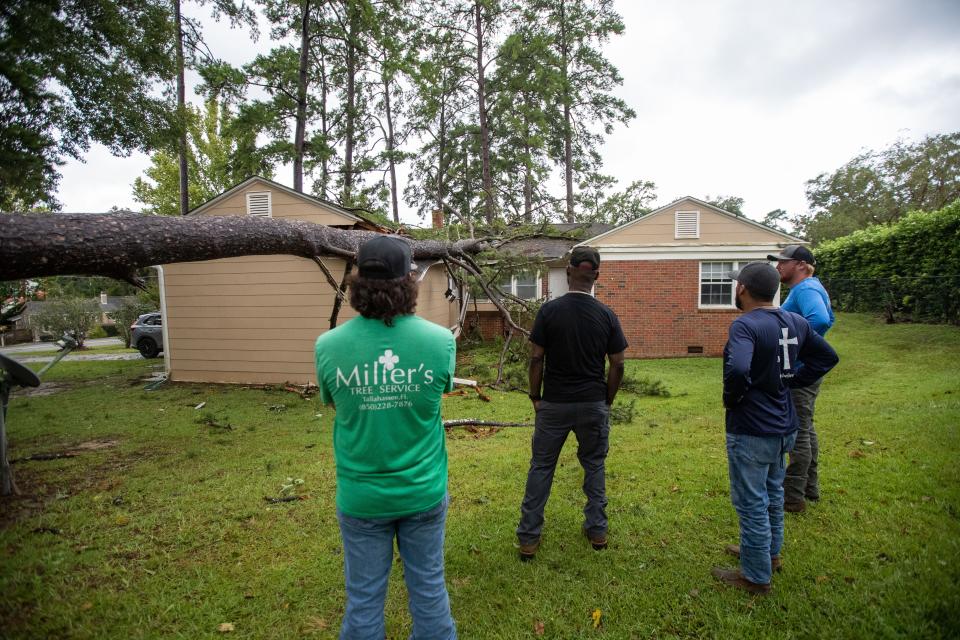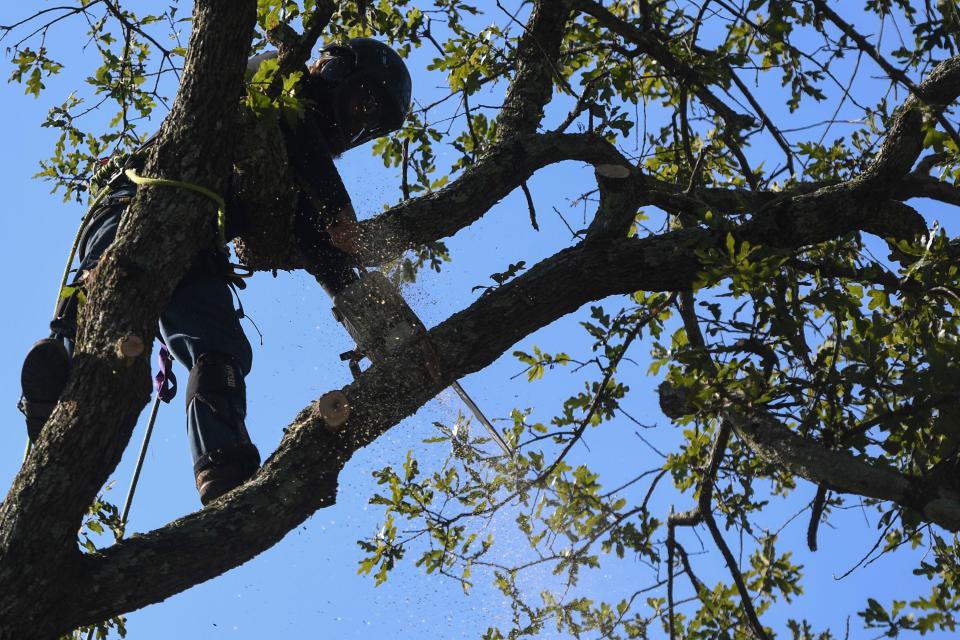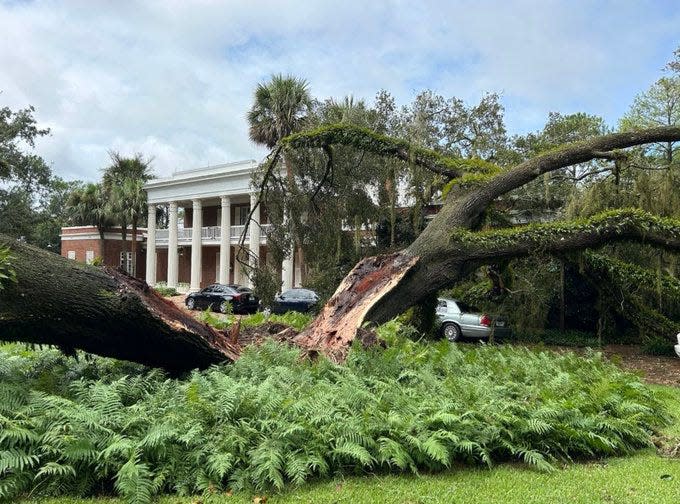How to use a chainsaw safely when clearing Hurricane Idalia fallen trees
Idalia text message updates: Sign up to receive updates on Hurricane Idalia and its aftermath from journalists across the USA TODAY network
After every Florida storm, such as the just-passed Hurricane Idalia, the familiar sound of chainsaws fills the air. Trees assaulted by relentless hurricane-force winds lose limbs, destroy roofs and carports or come crashing down across lawns and roads. And they have to be cleared.
But be aware that this is not the time to learn how to use a chainsaw. Approximately 36,000 people are treated in emergency rooms every year for chain-saw-related injuries, according to the Centers for Disease Control (CDC), and the potential rises after hurricanes and other natural disasters.
Here's how to use a chainsaw safely, and when not to use one at all.
Assess the situation first

When it's safe to do so, go see just what happened. If there is a chance that the tree has fallen across or is touching live electrical wires, leave it alone and call for help. You can receive serious, life-threatening shocks if any part of your body touches something conductive — water, hand tools, a metal fence, a tree branch, etc. — that's touching an energized power line.
Call the power company to report tree limbs that have fallen on a power line or uprooted underground utilities. Always assume all power lines are live.
If a live electrical cable has been torn down where people can reach it or has fallen into standing water, call 911.
Do not walk in floodwater. You may not notice electrical wires that have fallen in it, and floodwater contains a lot of contaminants that can make you sick, or worse.
Next is damage control. Is the tree threatening people or property? That will have to be addressed as quickly as safely possible.
If there is no emergency, examine the tree closely. Some damaged trees can be saved. You may want to get an arborist to examine the tree(s) to advise you.
Can I take down trees myself? When should I call a professional?

Homeowner: Remove limbs, branches and small trees from the ground level, without using ladders or ropes.
Professional: Take down trees in open areas, remove dead or hazardous limbs.
Licensed arborist: Remove leaning trees or broken limbs threatening a target; reach limbs that require climbing, restore a damaged tree that can be saved. You can find a certified arborist in your area at the Florida chapter of the International Society of Arboriculture (ISA) or by contacting the Florida Cooperative Extension Service County Office in your area.
Beware of people approaching you unsolicited and offering tree service after a hurricane. Tree service scams are extremely common after disasters. Get references, get multiple written estimates and ask if debris removal and stump grinding are included in the quote, check for proof of insurance, Research the company with the Better Business Bureau at BBB.org, and never pay the full amount of front.
Safety first
If the job is ground-level and safe to approach, grab your chainsaw (carefully).
Do not work alone. Have a first-aid kit ready and work out any communication signals with your partner.
Examine the site to identify potential hazards.
Set a perimeter at least two times the height of the tree, with more if you're felling the tree or dropping limbs. Keep everyone out of that area. Clear any rocks, debris and branches from the chainsaw's path before you begin.
Wear protective equipment: Glasses and face shield, hard hat, hearing protection, gloves, thick pants or leg chaps, heavy work boots. Do not wear loose-fitting clothing.
Avoid over-exertion, the most common cause for injury. Avoid lifting anything over 50 pounds and lift with the legs, not the back.
Operating the chainsaw
Follow the manual's instructions. Make sure the chainsaw is in good condition, with a chain that is lubricated, and sharpened. Check the tension on the chain and never allow it to sag, which could cause it to snap.
Keep both hands on the handles. Do not use one-handed, and maintain secure footing.
Cut at waist-level or below. Most chainsaw injuries to the head come from trying to make overhead cuts.
Be mindful of what a limb or branch will do after you cut it. Trapped or twisted limbs may snap back when freed and hit you, or pinch the saw.
Take your time. Most injuries are to the legs and feet and come from careless or aggressive cutting.
Shut it off if you're fueling it, carrying it more than 100 feet, or moving through slippery areas or heavy brush.
Fuel it 10 feet away from any ignition sources.
Do not cut with the tip as that can cause the saw to come right back at you faster than you can react, known as "kickback." Cut with the part of the bar closest to the engine or motor and don't let the tip touch the ground.
Remove broken, hanging branches first. Make clean cuts behind jagged tips of broken branches. Try a reduction cut first (prune back to a small limb) but if necessary do a removal cut (prune back to the trunk or parent branch). Try to remove as little live wood as possible, the tree needs it for energy against the stress.
Stop and remove cut branches from the area as you go to avoid hitting cut pieces with the tip of the chainsaw.
When does a damaged tree have to be removed?

You should try to save or restore a tree if its major limbs, trunk and roots are intact and the roots have not been exposed or lifted out of the ground. According to the University of Florida Institute of Food and Agricultural Sciences, you'll need to remove a tree if:
The lower trunk is cracked or broken
A large stem has split from the tree
The major roots are severed or broken
The tree is leaning toward a target and threatens a person, building, power line, roadway or other vulnerable situation
The remaining tree structure is highly susceptible to breakage
Large limbs are broken
This article originally appeared on The Daytona Beach News-Journal: Hurricane Idalia brought many down trees. How to use a chainsaw

